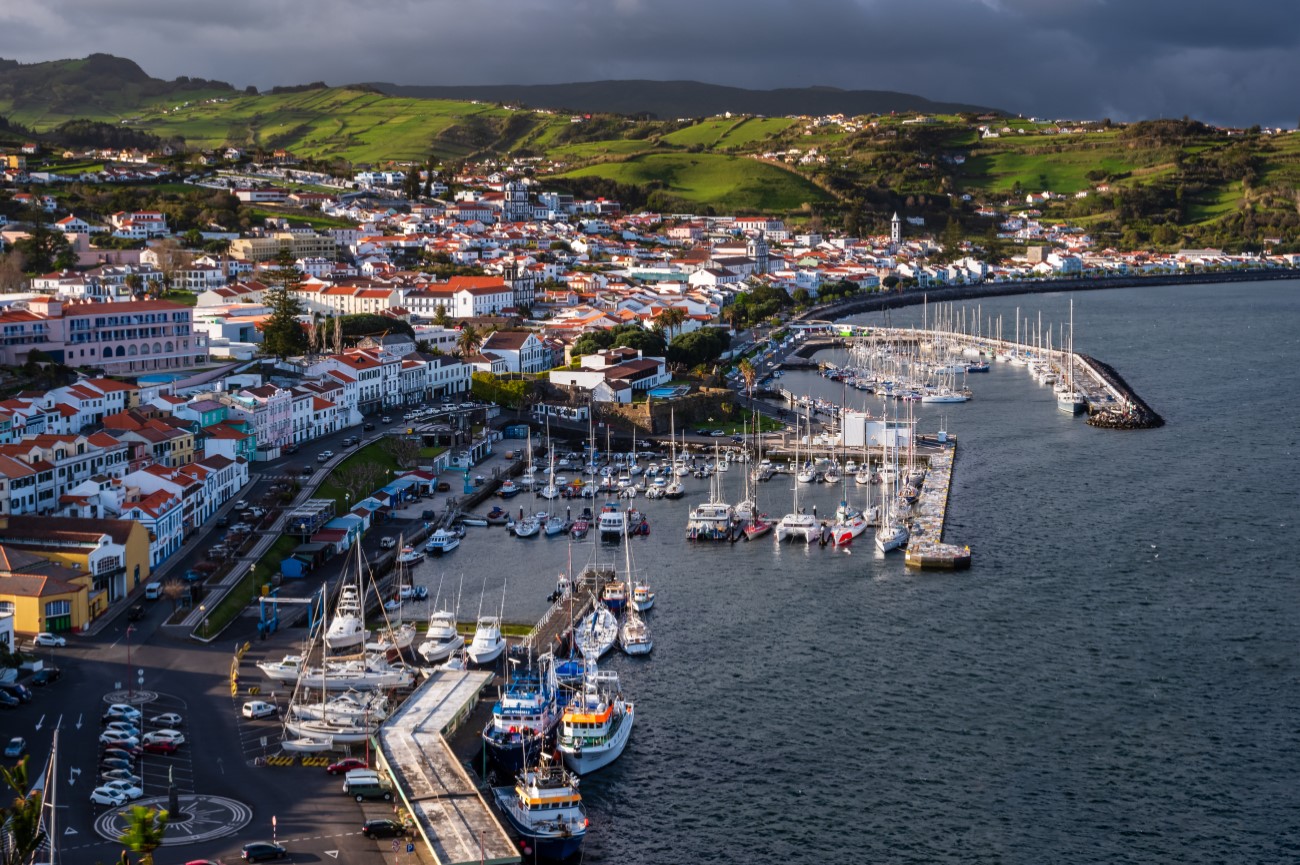Speckled about the steep slopes are clumps of small, fieldstone cottages. Their crumbling mortar and aging stones are victim to the ravages of time. Sprawling green meadows, vivid and fertile lay terraced and latticed-worked with pastel pinks and blues of the prolific hydrangeas which form hedgerows and borders.
Throughout the town streets are narrow, they dart willy-nilly between tall houses. The hooves of a horse resound as it gently picks its way over dark cobblestones polished to a sheen by countless feet before. Upon its weary back and mounted side-saddle an old man journeys.
Although late summer the air is already crisp as it transports and mingles the salty tang of sea and other heady aromas that give a hint to the freshly made cheese and bread still browning in the ovens. This, somehow, remains commonplace to the people of the Azores.
Huddled together in the Atlantic Ocean, isolated, some seven-hundred and sixty nautical miles south-west of Lisbon lies Portugal’s fascinating volcanic island group.

These nine islands are believed by some to be the remains of the legendary Atlantis.
This archipelago is, however, a veritable bastion of old-world European-style architecture, customs and charm. As though time has passed them by, the Azoreans maintain a lifestyle similar to that of their ancestors in centuries bygone.
Because of its geographic location, the island of Faial is a popular crossroads for Atlantic voyagers; a place to rest, undertake repairs and provision with food, fuel, wine and water.

The colourful and bustling port of Horta was a welcome landfall on my first trans-Atlantic crossing by sailboat. It was there where I first came to hear of Orthon Silviera.
The neat little row-house where Orthon lived is near a mile from town. The main entrance to his workshop is down through a small trapdoor in the middle of the hallway floor. The place is a jumble of tools, books, whalebone and ham radio equipment. Standing room is limited to maybe three people—small people, although it’s common to see a dozen or more shoehorned in together.
Orthon obviously loves having people around him, the very nature of the artist graces him with a keen insight into people and he is more than astute at judging their character.
Hunched over a scarred wooden desk in a corner, cramped and cluttered, sits Orthon. The mute glow of a sole, dusty lamp causes one to squint. I watched silently as he plied his talent.The rare and almost extinct art of scrimshaw.

Image for illustrative purposes only
Hardened and weather-beaten men with their hands tough and split, match the long, wooden shafts of their lethal harpoons. Almost forgotten now are those whalers of yore who, sometimes at sea for years at a stretch, brought scrimshawing into an art form. Those cheery huntsmen whilst in search of the whale would scrape, sand, scribe and polish an ivory whale tooth into a masterpiece.

Scrimshaw from Chaucer's Collection
I watched Orthon with great fascination. In an area before him among the clutter sat an ivory tooth, already buffed with sandpaper; about six inches in length, this curved cuspid had once belonged to the now protected great sperm whale.
Orthon’s working tool, a needle-like instrument of scalpel keenness, began deftly scribing. The white tooth was first blackened with India ink. Minute scratches from the tool begin to appear; depicted is a mast, some rigging and then a hull. Details of sails, waves and whales are born in a myriad of tiny white etches. Blackened once more, the tooth is then polished, leaving behind a work of scrimshaw art.
Video from David Adams Artworks
From 9 a.m. to 5 p.m. his doorbell rings, people arrive. ”Be careful of the hole!” he warns as his head pops up through the middle of the hallway floor. Some folk will simply visit and pay their respects, while others mill around waiting to buy a carving or to ask questions. Patiently the man tends to all as he continues to etch his work onto an ivory medallion or tooth.
Horta is a busied little port with various sized fishing craft, ferries and island traders coming and going. They refuel, load and unload. Often, it is safe refuge for those needing urgent repairs.

Many of the working craft look rather dubious as they are badly scraped and chafed. By way of design they are completely open to the ravages of nature. One such trader rides ominously low in the water. Oddly perched atop sacks of grain is its cargo; an automobile awaiting its new destination.
Watch for part 2 next weekend.
Chaucer
further reading
https://patriotrealm.com/index.php/3061-what-a-whale-of-a-tale-part-one
BLOG COMMENTS POWERED BY DISQUS
















































